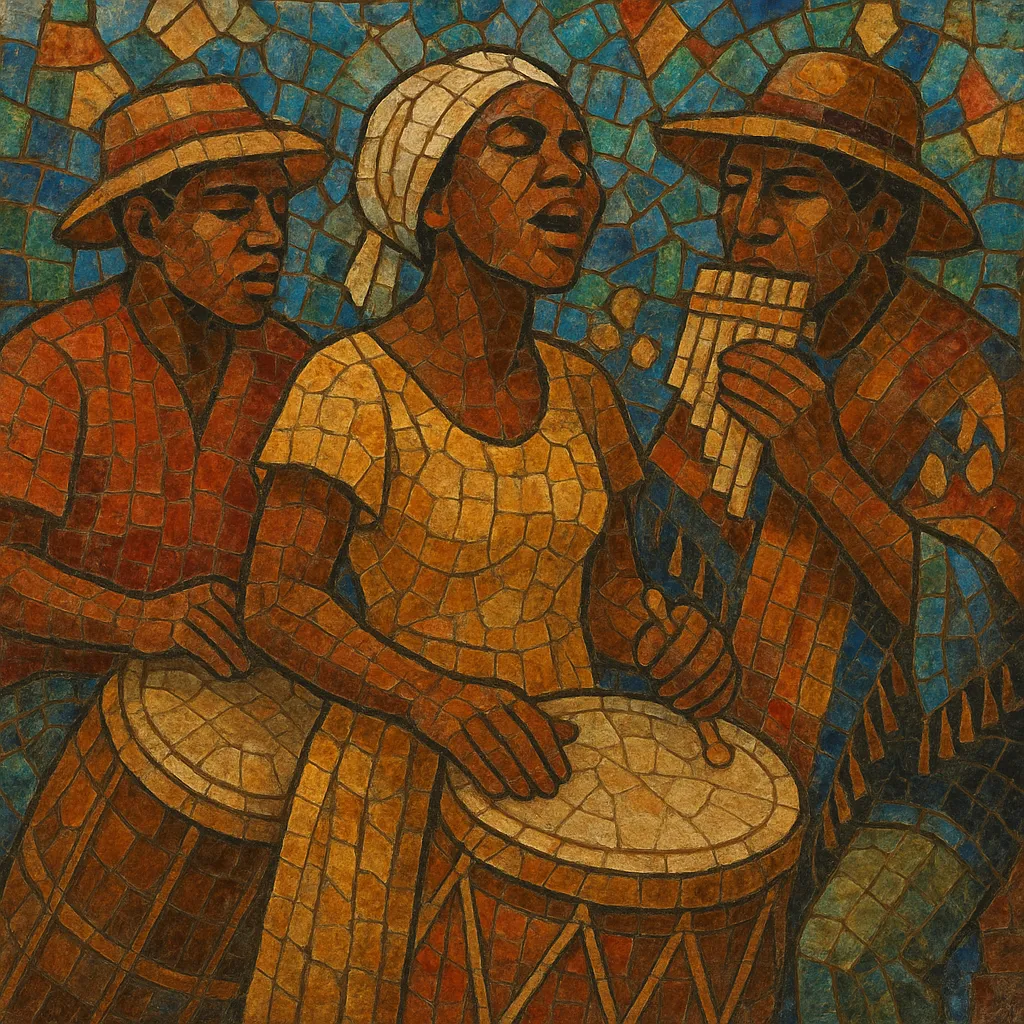Saya is an Afro‑Bolivian music and dance from the Yungas region of Bolivia, created by enslaved Africans and their descendants who were relocated from mining centers to tropical plantations during the colonial period.
Built on interlocking drum patterns, call‑and‑response singing, and communal procession, saya features large bass drums (bombos), smaller hand drums, metal jingles or bells, and seed‑ or hoof‑rattles (chajchas). Vocals are led by a caller (pregón) with a chorus responding in tight unison, often in Spanish interspersed with local lexicon. While primarily percussive and vocal, some staged or festival versions may add Andean panpipes (sikus) or other regional instruments to double melodic lines.
Rhythmically, the music sits in a firm duple meter (2/4), with syncopated accents that create a buoyant forward motion ideal for processional dance. The repertoire carries themes of community life, memory, celebration, and dignity, and it remains a living emblem of Afro‑Bolivian identity and cultural continuity.
Afro‑Bolivian communities formed during the Spanish colonial period when enslaved Africans were first taken to the mining zone of Potosí and later moved to the coca and agricultural estates of the Yungas (La Paz). In this setting, plantation work rhythms and communal singing merged with retained West and Central African practices, giving rise to a local processional music and dance that became known as saya.
Over generations, saya was sustained in villages such as Tocaña, Mururata, Chijchipa, Coroico, and others. The music’s core—interlocking drums, call‑and‑response, and coordinated dance—remained community‑based, performed at fiestas, patron‑saint celebrations, and local gatherings. Contact with surrounding Aymara‑Quechua musical life encouraged occasional inclusion of Andean instruments in staged contexts, though the heart of saya stayed percussive and choral.
In the late 1970s and 1980s, Afro‑Bolivian organizations and cultural troupes brought saya to broader urban and national audiences, strengthening its visibility. The formation of community organizations (notably cultural movements focused on saya) helped teach, document, and present the tradition in schools, theaters, and festivals, fostering intergenerational transmission and pride.
The 2009 Bolivian Constitution recognized Afro‑Bolivians as a distinct people, and saya became a widely acknowledged symbol of Afro‑Bolivian identity. Today, village ensembles and urban groups perform side by side, from local festivities to international stages. While staged versions may expand instrumentation, practitioners continue to emphasize the tradition’s communal, processional, and call‑and‑response roots.
Saya inspired later staged genres and choreographic reinterpretations in Bolivia. Although these borrow visual or rhythmic cues, saya itself remains the Afro‑Bolivian communal music and dance grounded in village practice and collective performance.



